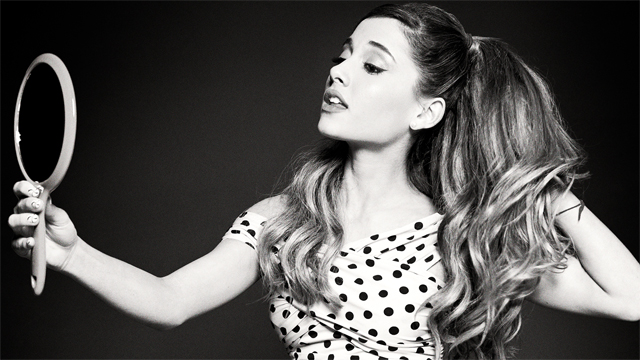
You might not know her name, but you definitely know her music. This summer, Ariana Grande matched Adele's record of having three singles in the top 10 of Billboard's Hot 100. And just last week, she scored her second number one album in less than a year. But this success is not what people are talking about. Instead, the focus is on which side of her face Ariana prefers and what a diva that makes her.
The Atlantic's Trey Taylor took on Grande's "portside motif" and charted the long lineage of stars wanting to control how the public interacts with their faces: from Barbra Streisand making Oprah change her set, to Mariah Carey uncomfortably trying to keep it cute, all the way back to old Hollywood star Claudette Colbert covering her "bad side" with green greasepaint to remind the cameraman of her best angles.
This obsession with putting one's best face forward is not exclusive to the famous, though. In this Instagram age, everything we do is judged based on how we made it look and how we looked doing it. When is the last time you took one selfie, instead of approx. 22? We all care about what people think of our faces, and a large number of us know which angles work best for us and try to stick to those. We live in a beauty-obsessed culture and we're vain products of it.
So think about all the posturing you do for your 200 followers and multiply that by a million and you have Ariana Grande. We've seen what fame and all the pressures that come with it can do to a young girl (see: Britney Spears' head-shaving revolt against the beauty paradigm), and that was before social media! Grande lives in a world where opinions about her hairstyle, her outfits, her dancing, her dimple, etc. are tweeted directly to her. Under this microscope, a loose preference for a certain side of one's face could easily turn into an obsession.

